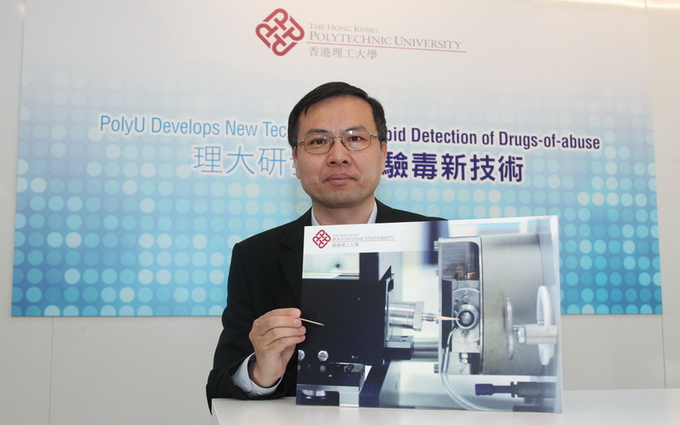Drug analysis plays a pivotal role in controlling drug abuse. However, the commonly-used analytic method requires time-consuming and labourious sample pretreatment and chromatographic separation. In this issue, Dr Yao Zhongping at the Department of Applied Biology and Chemistry Technology introduced the new technology in drugs-of-abuse analysis.
What are the deficiencies of existing drug abuse analysis?
The existing drug abuse analysis is performed with two steps - preliminary screening to handle massive samples and confirmatory analysis to ensure the reliability of analytic results. The preliminary screenings for illicit drug residues in body fluids may generate false positive and false negative results while the confirmatory techniques require labourious and time-consuming sample preparation and pretreatment procedures.
What is your latest invention in drugs-of-abuse analysis?
Funded by the Beat Drugs Fund, we developed the “Wooden-tip electrospray ionization mass spectrometry” to rapidly and reliably detect and quantify the abused drugs in urine and oral fluid within minutes. We also optimized various experimental conditions to establish an experimental protocol for the analysis of abused drugs.
The new method simply uses a wooden-tip (such as a toothpick) to attach the sample. Upon applying a high voltage to the wooden-tip, spray ionization is then induced and ion signals of the analytes are thus detected. With its high sensibility in detecting ketamine, norketamine, methyl amphetamine, MDMA from urine and oral fluid as well as cocaine from oral fluid, the technology requires no chromatographic separation and only a small amount of sample to complete a biological sample analysis.
How does the new technology excel the existing drug analysis method?
As a simpler, faster and more reliable method, this new technology greatly reduces the cost, procedures and manpower involved in drug analysis. This method well resolves the uncertainty of generating false positive and false negative results. This screening method can be applied not only in urine samples, but also in oral samples.
What is the future development in the related research area?
Our research team endeavours to develop even more sensitive and precise technology to enhance the efficiency and reliability of abused drugs testing. In future, we will focus on the tests of other drugs, including THC and heroin. We will further develop portable devices to facilitate rapid on-site drug analysis.
